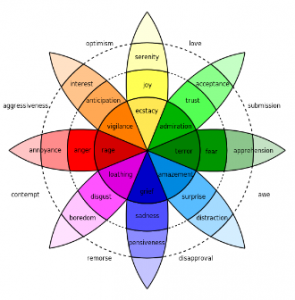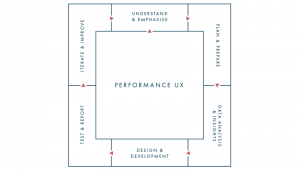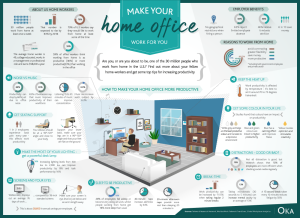Another record-breaking holiday shopping season is in the books and savvy retailers are using the brief downtime afforded by a typically slower January to finalize their 2017 strategy. If you’re in the same boat, I want to help you craft a strategy that takes advantage of the latest developments in eCommerce. So, let’s take a look at the major trends that will dominate eCommerce in 2017.
Mobile is Now

According to Adobe, mobile generated $ 28.43 billion in revenue during the 2016 holiday season. That’s a 23% year-over-year increase. This figure has been steadily rising over the past several years and that will likely only continue.
To set yourself up for success in 2017, creating a high quality mobile shopping experience needs to be at the forefront of your strategy. That means accounting for mobile users with your website design, implementing a streamlined checkout experience and generally making it as easy as possible for shoppers to buy from you on their phones and tablet.
If you need a little inspiration, AWWWARDS put together a list of their 20 best mobile eCommerce sites that should get your creative juices flowing.
Mobile and Alternative Payment Methods Rise in Prominence
We predict that the rise in mobile revenue will be accompanied by the increased use of alternative and mobile payment methods. Analysts have predicted for years that smartphones will supersede the traditional wallet and that’s finally beginning to prove out.
Alternative payment methods like PayPal and mobile payment methods like Apple Pay and Android Pay turn multi-step processes into a one-click scenario. Shoppers will naturally gravitate to them and merchants that want to take advantage of the wave of mobile growth will be wise to implement them as early as possible in 2017.
Video Will Continue to Dominate and Evolve
Video has been a hot topic for marketers for the last several years and for good reason, it’s highly effective. Research from Hyperfine Media found that 64% of users are more likely to buy a product online after watching a video. As the tools and skills to produce video become more affordable and accessible, we predict video will become an even larger part of merchant’s marketing arsenal.
We also think that personalized, shoppable video will make a big splash in 2017. This technology already exists to a certain extent having been released by YouTube in 2015, but it isn’t that impressive in its current state. We expect that to change this year, and as a result, personalized shoppable video will quickly become the dominant advertising medium for eCommerce merchants.
Kate Spade is an example of a brand that’s already leveraging available shoppable video technology to transport viewers instantly to the products worn in the video. We can’t wait to see how this technique evolves this year.
SaaS Becomes Attractive to Larger Brands
In 2017, we predict that more and more brands will grow tired of the expense and complexity associated with managing a custom built online store on an open source platform. The ease of use, reliability and affordability of a SaaS (sometimes referred to as hosted) platform is an increasing attractive proposition.
They’re already the favorite of new businesses and inexperienced merchants, but SaaS platforms have grown in power and flexibility in recent years. Some large brands have already made the switch away from open source platforms and we expect that trend to accelerate through 2017 and beyond.
The Barrier to Entry is Lowered for B2B/Wholesale Brands

In the past, building a B2B or wholesale online store required hiring a team of developers and investing tens of thousands of dollars in a custom site built on an open source platform. That represented a huge barrier to entry for small to medium sized businesses looking to make the leap to eCommerce. But that’s all changing.
There are now SaaS eCommerce platforms that include the specialized features that B2B and wholesale brands need out of the box. This removes the steep barrier to entry for small and medium sized wholesale and B2B brands. Because of this, we believe 2017 will see a significant number of these brands leverage eCommerce as a massive growth.
The Rise of Personalized Recommendations and Predictive Analytics

Big Data analytics have been a hot topic for the last several years, but they’ve historically been reserved for large enterprise brands. Over the last year that’s changed and the benefits of advanced analytics are trickling down to smaller businesses. Applications can leverage data and analytics to deliver personalized recommendations for small businesses, much like Amazon’s famous recommendation engine.
There are many other applications that turn raw data into actionable insights that enable small and medium sized businesses to close the distance with their larger competitors. We expect the adoption of these tools will continue and accelerate in 2017.
The End of Holiday Shopping “Days”

Looking back on the 2016 holiday season, we saw major retailers like Amazon extending their sales beyond traditional shopping days like Black Friday and Cyber Monday. As shoppers increasingly rely on online shopping for their holiday purchases, and they become more savvy about hunting down deals, expect smaller retailers to follow suit in 2017.
We also expect that Black Friday and Cyber Monday will no longer signal the start of the holiday shopping season. Instead, holiday deals and shopping will start much earlier in November and possibly even late October.
Artificial Intelligence Begins to Influence eCommerce
In 2016, artificial intelligence (AI) became a very real part of people’s lives through virtual assistants like Alexa (Amazon), Google Assistant, Siri (Apple) and Cortana (Microsoft). These assistants are new so the functionality is still limited. Most people are using them to complete basic tasks like setting reminders and performing web searches.
We expect that the primary role these assistants will play in eCommerce in 2017 is through product discovery via web searches. It will be interesting to see how SEO will evolve as a result of them. Of all the trends on this list, artificial intelligence is the most in its infancy, so it’s something we will need to monitor throughout the year to understand its true impact on the industry.
Chatbots
Chatbots are automated, text based agents that will answer a shopper’s questions about a brand. They’re like automated phone systems, only more interactive. This technology is still very new, and thus limited in functionality, but we expect them to play a large role in eCommerce this year.
In 2017, we expect that chatbots will soon become a shopper’s de facto first point of a contact with a merchant. They allow brands to offer a more personalized and guided shopping experience, increasing engagement and website conversions.
Spring’s personalized shopper bot is an excellent example of a brand that’s taking chatbot technology and running with it. Essentially, you tell the chatbot what kind of clothing you’re looking for and it will provide you with recommendations based on your criteria.
If you were using Chatbots for your online store, customers could – instead of browsing your site – simply use Facebook Messenger to communicate with your bot, almost mirroring the type of experience a customer would be getting if they were physically entering a retail store to shop. David Marcus explains, at the 7:30 mark, what it looks like to buy shoes using a Facebook Messenger bot.
There you have it, nine trends that we project will come to dominate eCommerce 2017. Not all of them may be applicable to your business, but if you adopt or account for even just a few of the ones that are, you’ll be setting yourself for a more successful and profitable 2017.
Digital & Social Articles on Business 2 Community(98)
Report Post







